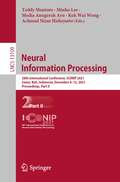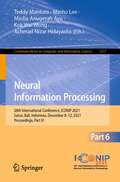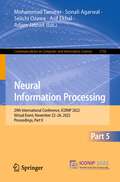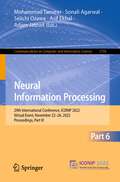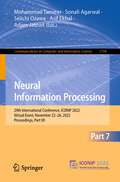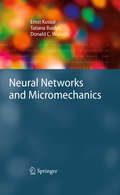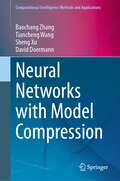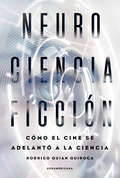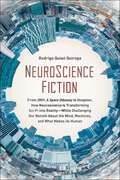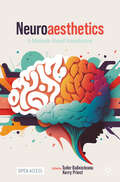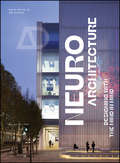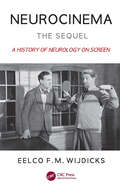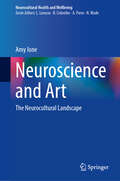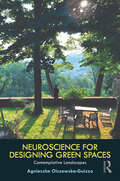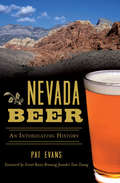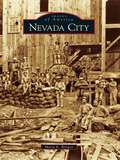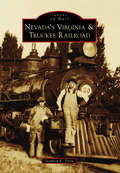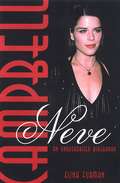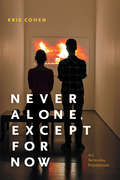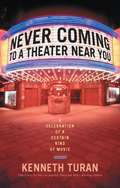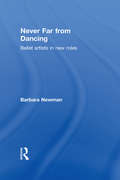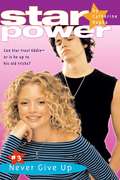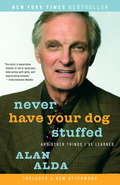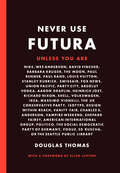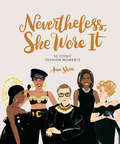- Table View
- List View
Neural Information Processing: 28th International Conference, ICONIP 2021, Sanur, Bali, Indonesia, December 8–12, 2021, Proceedings, Part II (Lecture Notes in Computer Science #13109)
by Minho Lee Kok Wai Wong Teddy Mantoro Media Anugerah Ayu Achmad Nizar HidayantoThe four-volume proceedings LNCS 13108, 13109, 13110, and 13111 constitutes the proceedings of the 28th International Conference on Neural Information Processing, ICONIP 2021, which was held during December 8-12, 2021. The conference was planned to take place in Bali, Indonesia but changed to an online format due to the COVID-19 pandemic. The total of 226 full papers presented in these proceedings was carefully reviewed and selected from 1093 submissions. The papers were organized in topical sections as follows: Part I: Theory and algorithms; Part II: Theory and algorithms; human centred computing; AI and cybersecurity; Part III: Cognitive neurosciences; reliable, robust, and secure machine learning algorithms; theory and applications of natural computing paradigms; advances in deep and shallow machine learning algorithms for biomedical data and imaging; applications; Part IV: Applications.
Neural Information Processing: 28th International Conference, ICONIP 2021, Sanur, Bali, Indonesia, December 8–12, 2021, Proceedings, Part VI (Communications in Computer and Information Science #1517)
by Minho Lee Kok Wai Wong Teddy Mantoro Media Anugerah Ayu Achmad Nizar HidayantoThe two-volume set CCIS 1516 and 1517 constitutes thoroughly refereed short papers presented at the 28th International Conference on Neural Information Processing, ICONIP 2021, held in Sanur, Bali, Indonesia, in December 2021.* The volume also presents papers from the workshop on Artificial Intelligence and Cyber Security, held during the ICONIP 2021. The 176 short and workshop papers presented in this volume were carefully reviewed and selected for publication out of 1093 submissions. The papers are organized in topical sections as follows: theory and algorithms; AI and cybersecurity; cognitive neurosciences; human centred computing; advances in deep and shallow machine learning algorithms for biomedical data and imaging; reliable, robust, and secure machine learning algorithms; theory and applications of natural computing paradigms; applications.* The conference was held virtually due to the COVID-19 pandemic.
Neural Information Processing: 29th International Conference, ICONIP 2022, Virtual Event, November 22–26, 2022, Proceedings, Part V (Communications in Computer and Information Science #1792)
by Seiichi Ozawa Adam Jatowt Sonali Agarwal Mohammad Tanveer Asif EkbalThe four-volume set CCIS 1791, 1792, 1793 and 1794 constitutes the refereed proceedings of the 29th International Conference on Neural Information Processing, ICONIP 2022, held as a virtual event, November 22–26, 2022. The 213 papers presented in the proceedings set were carefully reviewed and selected from 810 submissions. They were organized in topical sections as follows: Theory and Algorithms; Cognitive Neurosciences; Human Centered Computing; and Applications.The ICONIP conference aims to provide a leading international forum for researchers, scientists, and industry professionals who are working in neuroscience, neural networks, deep learning, and related fields to share their new ideas, progress, and achievements.
Neural Information Processing: 29th International Conference, ICONIP 2022, Virtual Event, November 22–26, 2022, Proceedings, Part VI (Communications in Computer and Information Science #1793)
by Seiichi Ozawa Adam Jatowt Sonali Agarwal Mohammad Tanveer Asif EkbalThe four-volume set CCIS 1791, 1792, 1793 and 1794 constitutes the refereed proceedings of the 29th International Conference on Neural Information Processing, ICONIP 2022, held as a virtual event, November 22–26, 2022. The 213 papers presented in the proceedings set were carefully reviewed and selected from 810 submissions. They were organized in topical sections as follows: Theory and Algorithms; Cognitive Neurosciences; Human Centered Computing; and Applications.The ICONIP conference aims to provide a leading international forum for researchers, scientists, and industry professionals who are working in neuroscience, neural networks, deep learning, and related fields to share their new ideas, progress, and achievements.
Neural Information Processing: 29th International Conference, ICONIP 2022, Virtual Event, November 22–26, 2022, Proceedings, Part VII (Communications in Computer and Information Science #1794)
by Seiichi Ozawa Adam Jatowt Sonali Agarwal Mohammad Tanveer Asif EkbalThe four-volume set CCIS 1791, 1792, 1793 and 1794 constitutes the refereed proceedings of the 29th International Conference on Neural Information Processing, ICONIP 2022, held as a virtual event, November 22–26, 2022. The 213 papers presented in the proceedings set were carefully reviewed and selected from 810 submissions. They were organized in topical sections as follows: Theory and Algorithms; Cognitive Neurosciences; Human Centered Computing; and Applications.The ICONIP conference aims to provide a leading international forum for researchers, scientists, and industry professionals who are working in neuroscience, neural networks, deep learning, and related fields to share their new ideas, progress, and achievements.
Neural Networks and Micromechanics
by Tatiana Baidyk Ernst Kussul Donald C. WunschThis is an interdisciplinary field of research involving the use of neural network techniques for image recognition applied to tasks in the area of micromechanics. The book is organized into chapters on classic neural networks and novel neural classifiers; recognition of textures and object forms; micromechanics; and adaptive algorithms with neural and image recognition applications. The authors include theoretical analysis of the proposed approach, they describe their machine tool prototypes in detail, and they present results from experiments involving microassembly, and handwriting and face recognition. This book will benefit scientists, researchers and students working in artificial intelligence, particularly in the fields of image recognition and neural networks, and practitioners in the area of microengineering.
Neural Networks with Model Compression (Computational Intelligence Methods and Applications)
by David Doermann Sheng Xu Baochang Zhang Tiancheng WangDeep learning has achieved impressive results in image classification, computer vision and natural language processing. To achieve better performance, deeper and wider networks have been designed, which increase the demand for computational resources. The number of floating-point operations (FLOPs) has increased dramatically with larger networks, and this has become an obstacle for convolutional neural networks (CNNs) being developed for mobile and embedded devices. In this context, our book will focus on CNN compression and acceleration, which are important for the research community. We will describe numerous methods, including parameter quantization, network pruning, low-rank decomposition and knowledge distillation. More recently, to reduce the burden of handcrafted architecture design, neural architecture search (NAS) has been used to automatically build neural networks by searching over a vast architecture space. Our book will also introduce NAS due to its superiority and state-of-the-art performance in various applications, such as image classification and object detection. We also describe extensive applications of compressed deep models on image classification, speech recognition, object detection and tracking. These topics can help researchers better understand the usefulness and the potential of network compression on practical applications. Moreover, interested readers should have basic knowledge about machine learning and deep learning to better understand the methods described in this book.
NeuroCienciaFicción: Cómo el cine se adelantó a la ciencia
by Rodrigo Quian QuirogaEl neurocientífico Rodrigo Quian Quiroga cuenta cómo la neurociencia está llegando adonde solo creíamos que podía llegar la ciencia ficción: borrar o implantar recuerdos, implantar prótesis neuronales o la posibilidad de leer la mente ya no pertenecen a la imaginación de un guionista, se han vuelto realidad. El cine imagina más allá de lo posible, suele anticiparse a su época y propone avances fascinantes y disruptivos. En Inception, un grupo de conspiradores implanta falsos recuerdos; en Hasta el fin del mundo, un científico alocado llega a leer los sueños; en 2001: Odisea del espacio, una supercomputadora siente y piensa como una persona. Pero así como el cine de ciencia ficción se apoya en los últimos avances de la ciencia, la ciencia también se nutre de la prolífica imaginación de los cineastas y de pronto vemos que es una realidad aquello que alguna vez fue fantasía: implantar memorias manipulando a voluntad grupos de neuronas a través de la optogenética , leer la mente durante el sueño a partir de avanzados algoritmos de decodificación, o lograr que las computadoras superen el pensamiento humano en infinidad de tareas mediante redes neuronales profundas; logros científicos concretos de los últimos años. El físico y neurocientífico Rodrigo Quian Quiroga, director del Centro de Neurociencia de Sistemas en la Universidad de Leicester en Inglaterra, propone un cruce entre el arte, la ciencia y la filosofía y se pregunta hasta dónde ha llegado el cine con sus fabulosas especulaciones y cuántas de éstas se están materializando en los laboratorios del mundo. Para eso, analiza cómo la ciencia está logrando lo que hace décadas parecía imposible, y cómo estos avances nos llevan a replantearnos las grandes preguntas filosóficas que el hombre viene haciéndose desde siempre.
NeuroScience Fiction: How Neuroscience Is Transforming Sci-Fi into Reality-While Challenging Our Belie fs About the Mind, Machines, and What Makes us Human
by Rodrigo Quian QuirogaWhat if science fiction stopped being fiction? Developments in neuroscience are turning sci-fi scenarios into reality, and causing us to revisit some of the philosophical questions we have been asking ourselves for centuries. Science fiction often takes its inspiration from the latest science . . . and our oldest questions. After all, the two are inextricably linked. At a time when advances in artificial intelligence are genuinely leading us closer to a computer that thinks like a human, we can't help but wonder: What makes a person a person? Countless writers and filmmakers have created futuristic scenarios to explore this issue and others like it. But these scenarios may not be so futuristic after all. In the movie Inception, a group of conspirators implants false memories; in Until the End of the World, a mad scientist is able to read dreams; in 2001: A Space Odyssey, a supercomputer feels and thinks like a person. And in recent years, the achievements described in leading scientific journals have included some that might sound familiar: implanting memories using optogenetics, reading the mind during sleep thanks to advanced decoding algorithms, and creating a computer that uses deep neural networks to surpass the abilities of human thought. In NeuroScience Fiction, neuroscientist and author Rodrigo Quiroga reveals the futuristic present we are living in, showing how the far-out premises of 10 seminal science fiction movies are being made possible by discoveries happening right now, on the cutting edge of neuroscience. He also explores the thorny philosophical problems raised as a result, diving into Minority Report and free will, The Matrix and the illusion of reality, Blade Runner and android emotion, and more. A heady mix of science fiction, neuroscience, and philosophy, NeuroScience Fiction takes us from Vanilla Sky to neural research labs, and from Planet of the Apes to what makes us human. This is a book you'll be thinking about long after the last page—and once you've read it, you'll never watch a sci-fi blockbuster the same way again.
Neuroaesthetics: A Methods-Based Introduction
by Tudor Balinisteanu Kerry PriestThis open access neuroaesthetics textbook, the first in the world, is designed for teaching a semester module (14 meetings) to undergraduate/masters students from both the sciences and the humanities. Written in a style that appeals to humanities students without prior science training, and to science students without prior humanities training, the textbook contains 6 Units, material for an introductory class, and summative comments to be discussed in a closing meeting. Each Unit comprises an overview designed as student home reading, a lecture, and a lab. The labs contain detailed step-by-step instructions for running a basic experiment and analysing the collected data, that can be easily implemented in humanities and science departments alike. The textbook introduces students to philosophical considerations of neuroaesthetics topics in context of the history of empirical aesthetics, showcases experimental approaches to the empirical study of dance, the visual arts, and music, and supports hands-on training in experimental research methods.
Neuroarchitecture: Designing with the Mind in Mind (Architectural Design)
by Ian RitchieApplying the insights of neuroscience to architecture has the potential to deliver buildings and spaces that measurably promote well-being and create healthier or more effective environments for specific activities. There is, however, a risk that neuroarchitecture will become just another buzzword, a passing architectural fashion or a marketing exercise just as 'eco', 'green' and 'sustainable' have become. This issue of AD offers the reader an alternative to 'neuro' sound-bites and exposes them to the thinking which led to the design of the Sainsbury Wellcome Centre for Neural Circuits and Behaviour (SWC), a pioneering medical research facility designed to foster collaboration between researchers. Multi award winning, the SWC was one of the first buildings in the world designed to take into account what has been learned about how the work space affects behaviour and is a highly effective building in which to work. Readers will gain a richer, deeper insight into the complex mental and existential aspects of architecture, design, and our many senses, how they interact and might interact in the future, and how that knowledge can be used to design more effective buildings and built environments.
Neurocinema—The Sequel: A History of Neurology on Screen
by Eelco F. WijdicksThe history of neurology as seen through the lens of the filmmaker is fascinating and extraordinary. Neurocinema-The Sequel is a review of the history of neurology as seen in film, starting with the early days of cinema and concluding with contemporary films now available in theaters and on streaming sites. The major themes of this book encompass how neurology has been represented in the history of cinema and how neurologic topics emerged and then disappeared, with some staging a comeback in more recent films. 180 films are assessed and rated, and many of these are exemplary depictions of neurological disorders. The author examines whether film, from a neurologic perspective, can provide insight and even debate. Each of the films discussed in this book demands serious attention by those who see and manage neurologic patients and support their families. Neurocinema - The Sequel chronicles this archive of neurologic representation, drawing readers in a rich collection of cinematic wonders of permanent cultural and historical value.
Neuroscience and Art: The Neurocultural Landscape (Neurocultural Health and Wellbeing)
by Amy IoneThis book is focused on how understanding ourselves as humans is incomplete without considering both biological and cultural aspects. Using the neurocultural perspective, the book explores how everything in the world is filtered back and forth through the brain and culture. The thrust of the book, therefore, is to explore the power of art in creating a bridge between cultural and neuroscientific lines of inquiry. Looking at both clinical and non-clinical populations, the text examines historical foundations, distinguishes congenital/developmental conditions from those that are acquired, and emphasizes how the brain constructs our sensory experiences. Several distinctive features separate this research from other publications. First, the book opens with a review of how the historical literature is still etched into the ideas we employ to explain elements across the interdisciplinary fields of art, aesthetics, our sensory experience, psychology, cognition, and well-being. Second, the research adopts a humanistic rather than a philosophical or social science perspective in demonstrating the value of coupling anatomy and physiology with the natural and social environment. In this, artists from all genres are incorporated. Among them are Iris Murdoch, Ludwig van Beethoven, Leonardo da Vinci, Cristoforo de Predis, Rembrandt, Federico Fellini, Chuck Close, and David Hockney. Case studies demonstrate how neuroscientific research meshes with art, individual, and cultural variables in ways that range from health and well-being to physiological decline and biological traumas. These include a case study that examines how Oliver Sacks combined biology and biography in his writings. It also explores art projects in several genres inspired by his studies. Another case study is on the role of film as a useful clinical tool. Here the book also demonstrates that cinematic devices used by filmmakers intersect with perceptual and cognitive neuroscience. A defining feature of the analysis is the integration of research on brain injuries with humanistic responses in film, literature, and the visual arts. This section outlines the lack of consensus regarding the causes and treatment of “shell shock” in World War I before introducing how research and art now work with PTSD/TBI. Finally, the book examines therapeutic cases of professional and non-professional artists, concluding with a discussion of synesthesia and the senses.
Neuroscience for Designing Green Spaces: Contemplative Landscapes
by Agnieszka Olszewska-GuizzoUrban parks and gardens are where people go to reconnect with nature and destress. But do they all provide the same benefits or are some better than others? What specific attributes set some green spaces apart? Can we objectively measure their impact on mental health and well-being? If so, how do we use this evidence to guide the design of mentally healthy cities? The Contemplative Landscape Model unveils the path to answer these questions. Rooted in landscape architecture and neuroscience, this innovative concept is described for the first time in an extended format, offering a deep dive into contemplative design and the science behind it. In the face of the global mental health crisis, and increasing disconnection from nature, design strategies for creating healthier urban environments are what our cities so sorely need. This book delves into the neuroscience behind contemplative landscapes, their key spatial characteristics, and practical applications of the Contemplative Landscape Model through case studies from around the world. Landscape architects, urban planners, students, land managers, and anyone interested in unlocking the healing power of landscapes will find inspiration here.
Nevada Beer: An Intoxicating History (American Palate)
by Pat Evans Great Basin YoungNevada's population boomed in the 1800s, ignited by the rush to find gold and silver. Thousands of prospectors, many German immigrants, passed through the up-and-coming mining towns, and breweries popped up in their wake. As the mining slowly wound down, whole towns disappeared, and breweries struggled to survive in the Silver State. Carson Brewing Company was closed in 1948, Reno Brewing Company shut its doors in 1957 and it would be decades before craft brewers like Great Basin, Big Dog's and Revision brought local beer back into the spotlight. Join author Pat Evans as he dives into the rough-and-tumble history of beer making in the Battle Born State and looks ahead to its bright future.
Nevada City
by Maria E. BrowerVibrant and captivating Nevada City began as a gold-mining camp called Deer Creek Dry Diggins. The large gravel deposits alongside this creek reportedly delivered a pound of pay dirt a day by the fall of 1849, when A. B. Caldwell's general store opened to supply this haphazard collection of tents. By March 1850, somewhere between 6,000 and 16,000 boisterous souls called it home, and the new town was christened "Nevada," meaning "snow covered" in Spanish. After 1861, townsfolk took to adding "City" to the name, to avoid confusion with the new state whose Comstock silver strike drained off many Nevada City residents.Seven fires burned early Nevada City to the ground,sparking a fashion for brick architecture that is evidentin many of the 93 downtown structures listed on theNational Register of Historic Places.
Nevada's Virginia & Truckee Railroad
by Stephen E. DrewThe Virginia & Truckee is the most famous short line railroad in American history. Brainchild of William Sharon and the Bank of California, the V&T hauled the silver and gold ore, the cordwood, and the mining timbers that made the 1870s "Big Bonanza" a reality. From the state capital at Carson City, V&T rails stretched 66 miles to Virginia City, Reno, and Minden, Nevada. Serving the transportation needs of the Comstock's nearly 40,000 inhabitants, the V&T remained in operation until 1950. The enormously successful railroad paid its early owners handsome dividends. The V&T's ornate locomotives and cars have starred in hundreds of Hollywood productions and are now preserved in US museums. Since 1976, fourteen miles of the railroad have been restored to operation. The Virginia & Truckee has become an enduring legend.
Neve Campbell: An Unauthorized Biography
by Elina FurmanNeve Campbell has overcome many obstacles to become one of the most powerful young players in Hollywood. Campbell's poignant story will give readers an inside look at her transformation from a complete unknown in small-town Canada to a major motion-picture star.This is the first book on the dynamic star of Party of Five, the Scream trilogy, The Craft, , 54, andWild Things. It provides insights into Neve's family life, her formative years in Canada, her nervous collapse at fourteen, her breakup with husband Jeffrey Colt, and her many amorous adventures with some of Hollywood's hottest leading men. Plus, readers will learn previously undisclosed details about the making of Scream, Scream 2, and Scream 3, and what really goes on behind the scenes of Party of Five.
Never Alone, Except for Now: Art, Networks, Populations
by Kris CohenHow is it that one can be connected to a vast worldwide network of other people and places via digital technologies and yet also be completely alone? Kris Cohen tackles this philosophical question in Never Alone, Except for Now by exploring how contemporary technologies are changing group formations and affiliations within social life. He identifies a new form of collectivity that exists between publics, which are built through conscious acts, and populations, which are automatically constructed through the collection of Big Data. Finding traditional liberal concepts of the public sphere and neoliberal ideas of populations inadequate on their own to examine these new forms of sociality, Cohen places familiar features of the web—such as emoticons, trolling, and search engines—in conversation with artworks by Felix Gonzalez-Torres, William Gibson, Sharon Hayes, and Thomson & Craighead to more precisely articulate the affective and aesthetic experiences of living between publics and populations. This liminal experience—caught between existing as a set of data points and as individuals newly empowered to create their own online communities—explains, Cohen contends, how one is simultaneously alone and connected in ways never before possible.
Never Coming To A Theater Near You: A Celebration of a Certain Kind of Movie
by Kenneth TuranThe LOS ANGELES TIMES and NPR Morning Edition film critic profiles the most intelligent, original, and enjoyable movies you may not have seen yet--and illuminates what makes them so good
Never Far from Dancing: Ballet artists in new roles
by Barbara NewmanA series of interviews with some of the foremost dancers in twentieth-century ballet, Never Far from Dancing reflects on the paths that their careers have taken since they retired from the stage. Barbara Newman has expertly edited each of her interviews to read as a monologue, addressing every aspect of ballet, from its styles and technical demands to its personalities, its celebrated roles and, most of all, to what happens when the dancing stops. While ballet invites all manner of writing from critics, admirers and academics, the thoughts and experiences of the dancers themselves are seldom recorded. Here, those who scaled the heights of their art hand down their wisdom and recount lives spent in this most enduring of art forms.
Never Give Up
by Catherine HapkaCould Star's wish be coming true? Star is touring Italy when she gets exciting news: The police have a new lead on her family's disappearance! Star is desperate to fly to Florida where the clues have turned up, but her manager, Mike, won't let her go because of her commitments, and because he doesn't want her getting in the investigators' way. Star is so angry she sneaks off -- in rocker Eddie Urbane's tour jet! Now Mike is furious with Star, and the media is having a field day. Will star and manager ever forgive each other, or is the tour ruined before it's barely begun?
Never Have Your Dog Stuffed: And Other Things I've Learned
by Alan AldaHe’s one of America’s most recognizable and acclaimed actors–a star on Broadway, an Oscar nominee for The Aviator, and the only person to ever win Emmys for acting, writing, and directing, during his eleven years on M*A*S*H. Now Alan Alda has written a memoir as elegant, funny, and affecting as his greatest performances.<P><P> “My mother didn’t try to stab my father until I was six,” begins Alda’s irresistible story. The son of a popular actor and a loving but mentally ill mother, he spent his early childhood backstage in the erotic and comic world of burlesque and went on, after early struggles, to achieve extraordinary success in his profession. <P> Yet Never Have Your Dog Stuffed is not a memoir of show-business ups and downs. It is a moving and funny story of a boy growing into a man who then realizes he has only just begun to grow. <P> It is the story of turning points in Alda’s life, events that would make him what he is–if only he could survive them.<P> From the moment as a boy when his dead dog is returned from the taxidermist’s shop with a hideous expression on his face, and he learns that death can’t be undone, to the decades-long effort to find compassion for the mother he lived with but never knew, to his acceptance of his father, both personally and professionally, Alda learns the hard way that change, uncertainty, and transformation are what life is made of, and true happiness is found in embracing them.<P> Never Have Your Dog Stuffed, filled with curiosity about nature, good humor, and honesty, is the crowning achievement of an actor, author, and director, but surprisingly, it is the story of a life more filled with turbulence and laughter than any Alda has ever played on the stage or screen.
Never Use Futura
by Douglas ThomasIt's everywhere, including the moon (on the commemorative plaque left by Apollo 11 astronauts), Nike sneakers, the artworks of Barbara Kruger, Ed Ruscha, and Jenny Holzer, 2001: A Space Odyssey credits, Domino's Pizza boxes, Absolut Vodka bottles, and Red Bull cans. Richard Nixon used it for his presidential campaign, as did Hillary Clinton. Indeed, Futura is one of the most used fonts in the world today—the typeface of modern design—more so even than Helvetica. This fascinating book explores the cultural history and uses of a face that's so common you might not notice, until you start looking, and then you can't escape it. Douglas Thomas traces Futura from its Bauhaus-inspired origin in Paul Renner's 1924 design, to its current role as the go-to choice for corporate work, logos, motion pictures, and advertisements. Never Use Futura is illuminating, sometimes playful, reading, not just for type nerds, but for anyone interested in how typefaces are used, take on meaning, and become a language of their own.
Nevertheless, She Wore It: 50 Iconic Fashion Moments (Nevertheless Ser.)
by Ann ShenFrom the creator of the bestselling Bad Girls Throughout History!Celebrated illustrator and author Ann Shen shares her striking study of history's most iconic styles, and the women who changed the world while wearing them.From the revolutionary bikini to the presidential pantsuit, this book explores 50 fashions through bold paintings and insightful anecdotes that empower readers to make their own fashion statements.• Demonstrates the power of fashion as a political and cultural tool for making change• Brilliantly illustrated with Ann's signature art style• Filled with radical clothing choices that defined their timeLooks include the Flapper Dress, the unofficial outfit of women's independence in the 1920s; the Afro, worn as a symbol of black beauty, power, and pride; the Cone Bra, donned by Madonna in her 1989 power anthem "Express Yourself"; and the Dissent Collar, Ruth Bader Ginsburg's famous signifier for when she disagrees with the majority.With stunning and vibrant illustrations, this is a treasure for anyone who wants to defy style norms and rewrite the rules. • An insightful look at the intersection of fashion statements and historical female power• Perfect for fans of Ann Shen, as well as anyone who loves fashion, feminism, and political consciousness• You'll love this book if you love books like Women In Science: 50 Fearless Pioneers Who Changed The World by Rachel Ignotofsky; Strong Is the New Pretty: A Celebration Of Girls Being Themselves by Kate T. Parker; and Women Who Dared: 52 Stories Of Fearless Daredevils, Adventurers, And Rebels by Linda Skeers.
